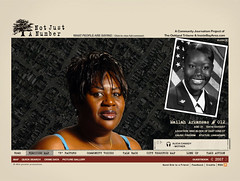There’s a magazine that I’d love to read if someone published it (yes, the print kind). Of course, it’s about the Internet. It’s about the stack that makes up the Internet, the platform or, as many people are calling it, the Internet Operating System. It’s mostly technology. But it’s a little bit business. And it’s definitely artful.
It’s not Business 2.0 or Red Herring. It’s not The Industry Standard, though I’d be happy to read that again, too. Those were/are too business-focused and often misunderstand the wider impact of many breakthroughs.
It challenges the people in positions to change things to make changes that matter. It exposes the advances in the market that have negative repurcussions to the Internet as a platform for good.
It’s critical and hard-hitting. It’s accurate. And it is therefore trusted and respected.
It isn’t first to report on anything. It might even be last, but it gets the story right.
It dives into services like Pipes, EC2, and Google Apps. It analyzes algorithms, data formats, developer tools, and interactive design. It studies human behaviors, market trends, new business models, leadership strategies and processes.
It’s not about startups, but it may be about why VCs like certain startups. I love the fact that Brad Burnham of Union Square Ventures disclosed the broader motivations for investing in AdaptiveBlue:
“We are particularly excited about the prospect of AdaptiveBlue developing tools that allow users to build the semantic web from the bottom-up to fill in the gaps and correct the top-down approach when necessary.”
This magzine should be printed monthly with lots of possibilities online that may actually be more successful in the long term. (I can imagine the print magazine turning into a sort of marketing vehicle for the web site. )
It includes longer deep-dive articles that have been throughly researched and copyedited. The editors are paid very well because they are experienced and talented. It also includes samples from the blogosphere and insights from contributors and participants who care deeply about the subject. There are intelligent interviews of people who are innovating and actually doing important things. There are insightful case studies of both the methods and results of certain technology breakthroughs. And there are columns that remind us to keep it real.
What I want from a new magazine about the Internet Operating System is to understand the technology breakthroughs and their meaning in the conext of the history of the Internet. I want to know what we can learn from art and innovation online to understand what lies ahead. The business model breakthroughs matter hugely, but I think they often matter as a result of an innovative technology rather than serve as a driver.
How is the Internet as a platform, operating system, network — whatever you want to call it — evolving? Who and what is influencing change? What are the trends that indicate this progression? How do new online developments impact communication, governments and social organizing principles?
Of course, a lot of this is out on the web in bits and pieces. But I’m too lazy to go through my entire feedreader and follow all the links to all the interesting stories out there. Maybe someone could invent a personalized and distributed Digg that surfaced what mattered to me more efficiently. But even then, I’d still pay a subscription fee and happily browse through endemic advertising for someone to assemble something thoroughly thought through, designed nicely and printed on my favorite portable reading medium — paper (recycled, of course).
And I’d read it in part because I would know everyone in the business would be reading it, too. At least, I suspect I’m not alone in wanting this…?
